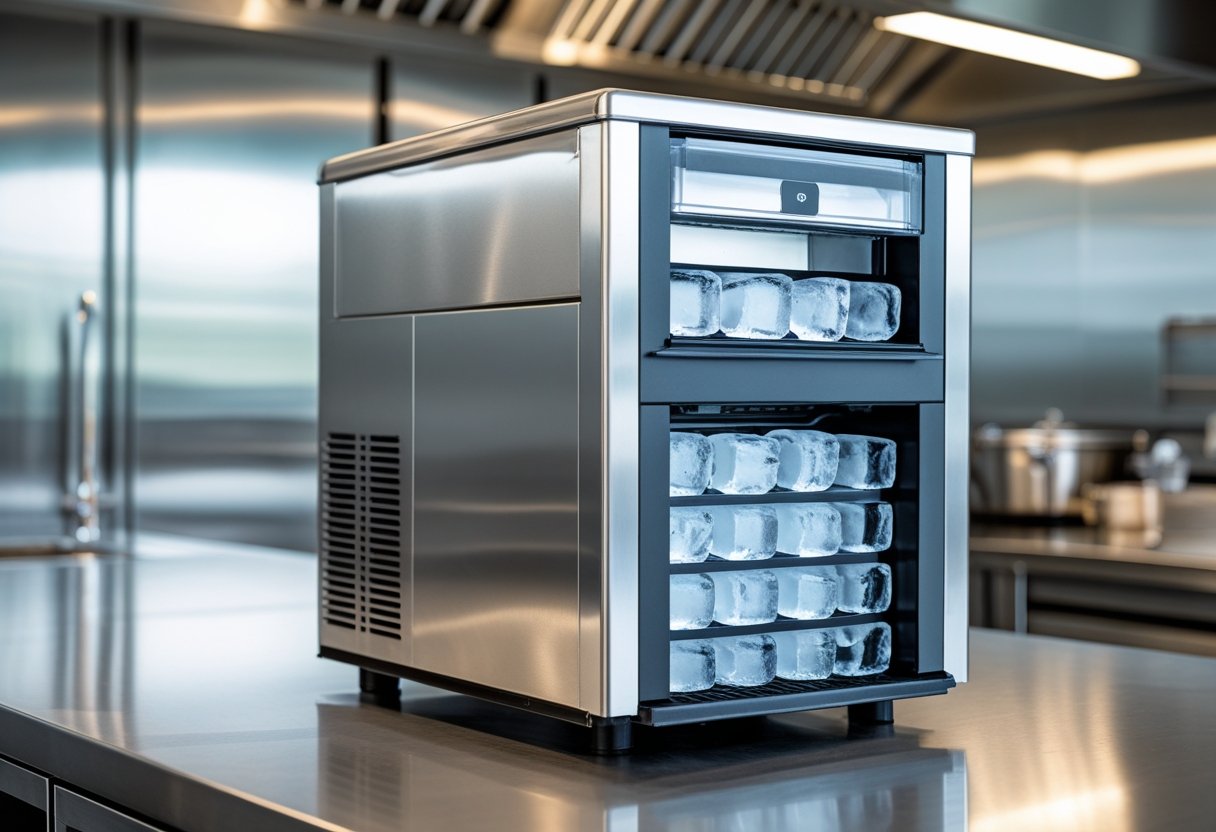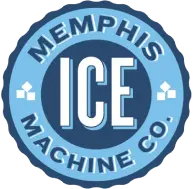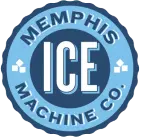proudly serving
the mid-south
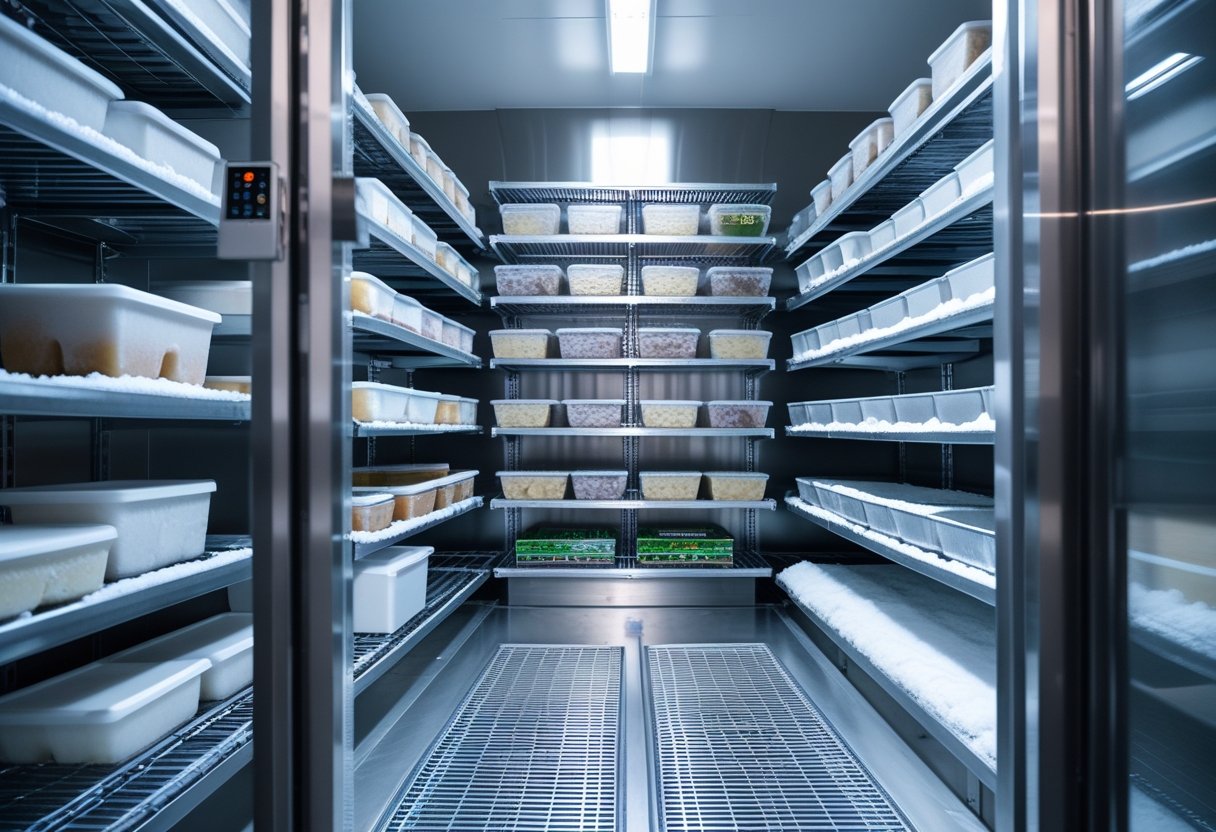
Walk-In Freezer Temperature Issues: Easy Fixes to Keep Things Cool
When your walk-in freezer’s temperature isn’t right, it can quickly affect your whole operation. Whether food is spoiling or your ice machine isn’t keeping up, temperature problems need quick attention.
You rely on your freezer to keep everything cold and safe. Knowing what to watch for can save you time and money.
Even a small temperature shift might mean there’s a clogged filter, frost buildup, or a faulty sensor. Keeping your equipment clean and monitoring temperatures regularly helps avoid costly breakdowns.
At Memphis Ice, we’ve kept businesses in the Mid-South cool since 1977. We know how crucial a steady, correct temperature is for your freezer to work smoothly.
If your walk-in freezer acts up, a quick look at these common issues is a smart first step.
Understanding Walk-In Freezer Temperature Issues
Keeping your walk-in freezer at the right temperature protects your food and helps you avoid costly problems. Temperature problems often show up in specific ways and depend on keeping the freezer within an ideal range.
Common Signs of Temperature Problems
You might notice frost buildup inside the freezer or ice that looks clumpy or wet. These signs mean the temperature isn’t steady.
If the freezer feels warm or you see puddles of water, the unit may not be cooling properly. Another clue is if the compressor or fans run constantly, showing the freezer is working too hard.
Watch for temperature swings. They stress your freezer’s parts and put your stored items at risk.
Ideal Temperature Range for Walk-In Freezers
Your walk-in freezer should stay around 0°F (-18°C). This temperature keeps food properly frozen and safe.
Temperatures above 0°F let food start to thaw, which can lead to spoilage. Below -10°F isn’t usually necessary and can cause your freezer to use extra energy.
Check the thermostat and temperature sensor regularly. If temperatures are off even a few degrees for long periods, it can affect the freezer’s efficiency and damage your food inventory.
Impact on Food Safety and Quality
When your freezer temperature rises above 0°F, bacteria can grow faster. This causes food to spoil or lose taste and texture.
Freezing at the right temperature keeps food fresh longer and stops ice crystals from forming inside products. Inconsistent temperature harms food quality and may lead to unsafe food.
Causes of Walk-In Freezer Temperature Fluctuations
Temperature changes in your walk-in freezer can happen for several reasons. These include problems that let warm air in, issues with how the freezer measures temperature, and blockages that stop cold air from moving correctly.
Understanding these causes can help you spot and fix problems before they harm your stored goods.
Faulty Door Seals and Gaskets
Door seals and gaskets keep cold air inside your freezer. If they crack, tear, or become loose, warm air can sneak in.
This forces your freezer to work harder to stay cold, which can cause temperature swings. You might see frost buildup or find the door feels damp outside.
Check your door seals at least once a month. Look for cracks or areas where the seal isn’t tight.
You can test the seal by closing the door on a dollar bill—if you can pull it out easily, the seal might need replacing. Fixing or swapping worn gaskets saves energy and keeps your freezer at a stable temperature.
Malfunctioning Thermostat
Your walk-in freezer’s thermostat controls the temperature inside. If the thermostat is broken or not calibrated right, your freezer may get too cold or not cold enough.
Signs of a bad thermostat include frequent temperature changes, the compressor turning on and off too often, or the freezer running constantly without cooling properly.
Sometimes, a thermostat reset or replacement fixes the issue. A qualified technician can test this part and make sure it’s working to keep your freezer stable.
Improper Airflow Inside the Freezer
Good airflow lets cold air move evenly throughout your walk-in freezer. If airflow is blocked by dirt, debris, or items stored too close to vents, some parts of the freezer may get warmer.
This uneven cooling causes temperature swings and puts some foods at risk. Dirt can gather on fans or vents, making it hard for air to circulate.
Your freezer should have clear space around vents and shelves organized to allow air movement. Regular cleaning and proper storage keep the airflow steady.
Mechanical and Electrical Component Failures
Walk-in freezers rely on several key parts to keep the temperature steady. When components like the compressor, refrigerant system, or fans fail, your freezer won’t cool properly.
Knowing what to check can help you spot problems before they lead to spoilage.
Compressor Problems
Your freezer’s compressor acts like its heart, pumping refrigerant through the system. If the compressor fails or runs inefficiently, the freezer won’t reach or maintain the correct temperature.
Common signs of compressor trouble include loud noises, frequent cycling on and off, or the freezer not cooling at all. Electrical issues such as faulty wiring or a bad start relay can also stop the compressor from working.
If the compressor overheats or locks up, it may need repair or replacement. Regular maintenance and keeping coils clean help prevent these issues.
When in doubt, call a qualified technician to test the compressor and related electrical parts safely.
Refrigerant Leaks
Refrigerant absorbs heat inside the freezer. If your walk-in is not cooling well, a refrigerant leak is a common cause.
Leaks lower the system’s ability to remove heat, leading to rising temperatures. Look for oily spots or frost buildup where refrigerant lines connect.
Low refrigerant levels cause the compressor to run longer and less efficiently. Fixing a leak requires finding and repairing the source, then recharging the system with refrigerant.
Always hire a professional for refrigerant repairs. Keeping your system tight and checking for leaks during routine service helps maintain reliable cooling.
Evaporator and Condenser Issues
The evaporator and condenser coils move heat out of the freezer. If these parts are dirty, frozen, or damaged, your freezer will struggle to keep cold air flowing.
A frosted evaporator coil blocks air movement inside your walk-in, causing uneven cooling. This often happens if the defrost system fails.
On the outside, dirty condenser coils make the compressor work harder and raise temperatures. Regular cleaning of coils and checking the defrost cycle help avoid these problems.
Fans that move air across the coils must also run smoothly. If you notice frost buildup or hear unusual noises, have a technician inspect your evaporator and condenser.
External Influences on Freezer Performance
Several factors outside your walk-in freezer can affect how well it keeps cool. Changes in the environment, how often the door opens, and how much you store all put extra work on your system.
Knowing these can help you maintain steady temperatures.
Ambient Temperature Changes
The temperature around your freezer plays a big role in how hard it has to work. When the air near your unit gets hotter, the cooling system runs longer to maintain the inside temperature.
This extra effort can lead to higher energy use and wear on the compressor. If your walk-in is installed in a warm area or a space that heats up during the day, the freezer may struggle more.
Proper ventilation around the unit helps keep ambient temperature lower and prevents overheating. Keep the freezer away from direct sunlight, heaters, or kitchen appliances that produce heat.
If you notice the outside temperature regularly rising, adjust insulation or improve airflow to help your freezer stay steady.
Frequent Door Openings
Every time the freezer door opens, warm, moist air rushes inside, causing temperature spikes. Frequent or long openings make the cooling system work overtime to remove the heat and moisture trapped inside.
Limit how often and how long you open the door, especially during busy hours. Organize your storage so you can find items quickly without leaving the door open.
Consider installing door alarms or strip curtains to reduce cold air loss. Training staff and adjusting workflow can reduce door openings and help your freezer maintain consistent temperatures.
Overloading the Freezer
Putting too much in your walk-in freezer creates problems with air circulation. Good airflow is needed so cold air reaches all stored items evenly.
When overloaded, the cold air can’t move freely, causing hot spots and uneven cooling. Avoid stacking goods tightly against walls or blocking vents.
Regularly check that air can pass through the shelves and around stored items. Use shelving designed for airflow and don’t exceed the maximum load capacity.
If you’ve added new items, give the freezer time to cool down again before adding more. Proper loading keeps your freezer working efficiently and protects your stored products.
Preventing Walk-In Freezer Temperature Issues
Keeping your walk-in freezer at a steady temperature means stopping problems before they start. Regular upkeep, smart loading, and trained staff all help you avoid temperature swings.
Regular Maintenance Schedules
Routine maintenance keeps your freezer running smoothly. Check door seals often for leaks or cracks that let cold air escape.
Clean condenser coils to remove dust and dirt that make the compressor work harder. Watch temperature logs daily.
Sudden shifts could signal a failing thermostat or weak fans. Replace worn parts like gaskets or filters on time to avoid bigger breakdowns.
Schedule professional inspections seasonally to catch problems early.
A quick maintenance checklist:
- Inspect door seals and hinges
- Clean condenser coils and fans
- Check thermostat settings and sensors
- Monitor temperature logs daily
- Schedule quarterly professional tune-ups
Doing these checks regularly keeps your freezer efficient and your inventory safe.
Proper Loading Techniques
How you load your walk-in freezer affects airflow and temperature stability. Avoid overpacking shelves or blocking vents.
Cold air needs room to circulate evenly around your products. Keep heavier items on lower shelves and lighter, fragile goods on top.
Store new items behind or beneath older stock to maintain first-in, first-out (FIFO) rotation. Use shelving that allows air movement, like wire racks.
Leave at least 3-4 inches of space between products and walls or vents.
Here’s a quick guide:
| Do | Don’t |
|---|---|
| Use wire shelving for airflow | Stack boxes right against vents |
| Leave space between items | Overload shelves to block air |
| Rotate stock with FIFO method | Mix hot and frozen products |
| Store heavier items low and stable | Put heavy items on top shelves |
Following these loading tips helps your freezer hold a steady temperature and keeps food safe.
Staff Training and Best Practices
Your team plays a big role in preventing temperature issues. Train staff to close doors gently and quickly.
Leaving doors open for too long lets warm air in, causing temperature swings. Make sure everyone understands the importance of reporting unusual sounds, frost buildup, or drips.
Teach them how to check temperatures using a thermometer and where to log data. Create clear rules for freezer use like:
- No standing with doors open
- Check product placement before closing
- Report any malfunction right away
When your staff knows what to watch for and acts quickly, you reduce risk and keep operations smooth.
Troubleshooting Walk-In Freezer Temperature Problems
When your walk-in freezer isn’t holding the right temperature, quick action is key. You can follow clear steps to find the cause and know when to get expert help.
Step-By-Step Diagnostic Procedures
Start by checking the freezer’s temperature control. Make sure it is set to 0°F or the recommended level.
Use a thermometer to confirm if the actual temperature matches the setting. Next, inspect the door seals for any cracks or gaps.
Poor seals let warm air in, causing temperature spikes. Clean the seals and replace them if needed.
Look inside the freezer for frost buildup on the coils or ice blocking airflow. Defrosting your freezer can clear this and improve cooling efficiency.
Check that the condenser coils are clean and free of dust. Dirty coils make it harder for your freezer to cool properly.
A gentle cleaning with a brush or vacuum can help. Finally, listen for unusual noises from the compressor or fans, which could signal mechanical problems.
When to Call a Professional Technician
If your freezer still doesn’t reach the right temperature after these checks, call a technician. Problems like a faulty compressor, damaged thermostat, or refrigerant leaks need expert repair.
Schedule a service promptly if you notice:
- Frequent temperature swings
- Ice buildup that returns quickly after defrosting
- Loud or strange noises from the freezer
- Water pooling inside or under the unit
A trained technician can test your freezer and fix issues safely. This helps you avoid costly breakdowns.
Don’t wait too long to get help. Reliable refrigeration protects your stored goods.
Long-Term Solutions for Optimal Performance
Keep your walk-in freezer running smoothly by making smart changes to its structure and monitoring systems. These upgrades help your freezer work efficiently and spot problems early.
Upgrading Insulation and Components
Good insulation keeps cold air inside your freezer. If your insulation is thin or damaged, replace it with thicker, modern materials to cut energy use and hold steady temperatures.
Check doors, walls, and ceilings for leaks or cracks that let warm air in. Upgrading key parts like door seals and fans also helps.
New, tight door seals stop cold air from escaping. Efficient fans improve airflow so cold air reaches every corner.
These upgrades lower the workload on your system and prevent wide temperature swings.
| Upgrade Area | Benefits |
|---|---|
| Thicker insulation | Reduces heat transfer |
| Door seal replacement | Stops cold air leaks |
| High-efficiency fans | Promotes even cooling |
Implementing Monitoring Systems
You need to know when problems happen. Install temperature monitors with alerts to track your freezer’s climate in real time.
These systems warn you if temperatures rise above set limits, so you can act quickly. Some monitoring systems connect to your phone or computer.
You can check your freezer’s status from anywhere. For busy businesses, this means less downtime and fewer surprises.
Using data from these tools helps technicians spot trends and schedule maintenance before failures happen.
Frequently Asked Questions
Temperature problems in your walk-in freezer can come from faulty parts or poor maintenance. Knowing what to look for helps you fix issues quickly.
What could be causing my walk-in freezer to not reach the proper temperature?
Dirty condenser coils, blocked airflow, or a worn-out door seal are common causes. These problems make it hard for the freezer to stay cold.
Check if the thermostat is set correctly.
How can I troubleshoot unusual ice buildup in my walk-in freezer?
Ice buildup often means door seal leaks or frequent door openings. Moisture from warm air gets inside and freezes.
Make sure seals are tight and avoid leaving the door open longer than needed.
Why is my walk-in cooler’s compressor running but not cooling sufficiently?
If the compressor runs but cooling is weak, the refrigerant level might be low or there could be a leak. Dirty coils or a faulty fan can also reduce cooling.
Regular checks and cleaning help prevent these issues.
What steps should I take if I suspect my walk-in freezer’s thermostat is malfunctioning?
First, test the thermostat by comparing its reading to a separate thermometer. If it’s off, replace or recalibrate it.
Watch for inconsistent temperatures or sudden starts and stops of the compressor.
How do I prevent frost and condensation on my walk-in freezer doors and panels?
Keep door seals in good shape to stop moist air from leaking in. Control temperature swings by limiting how often and how long the door stays open.
Adding a heater strip on the door frame can help reduce frost buildup.
What are the signs that my walk-in freezer might be overcharged with refrigerant?
Overcharging can cause excessive frost on the coils. The compressor may become noisy or run all the time.
You might also notice poor cooling. Higher energy bills can be another sign.
Contact a refrigeration expert if you suspect this problem. They can check and adjust the refrigerant.
Recent News
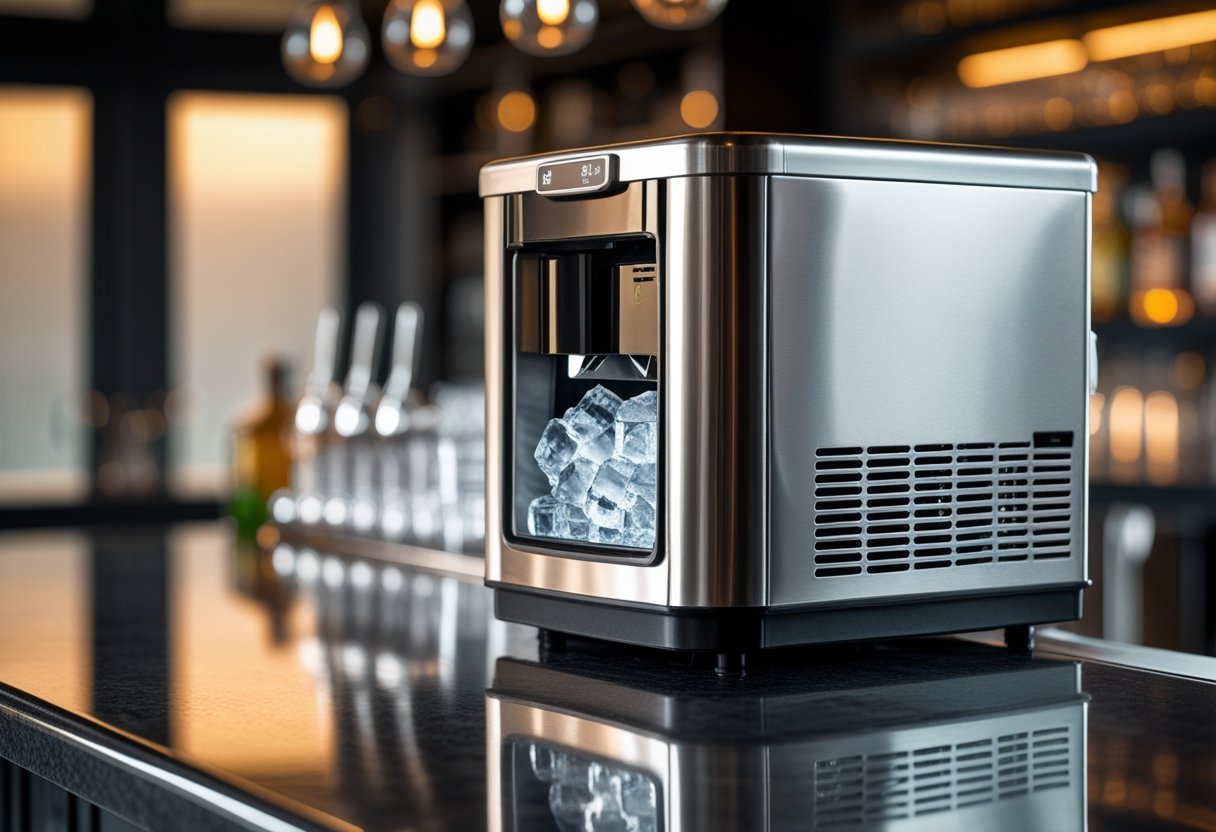
Preventative Maintenance for Ice Machines Tips to Keep Ice Fresh and Machines Running Smoothly

Bar Equipment Refrigeration Guide Tips for Keeping Drinks Perfectly Chilled
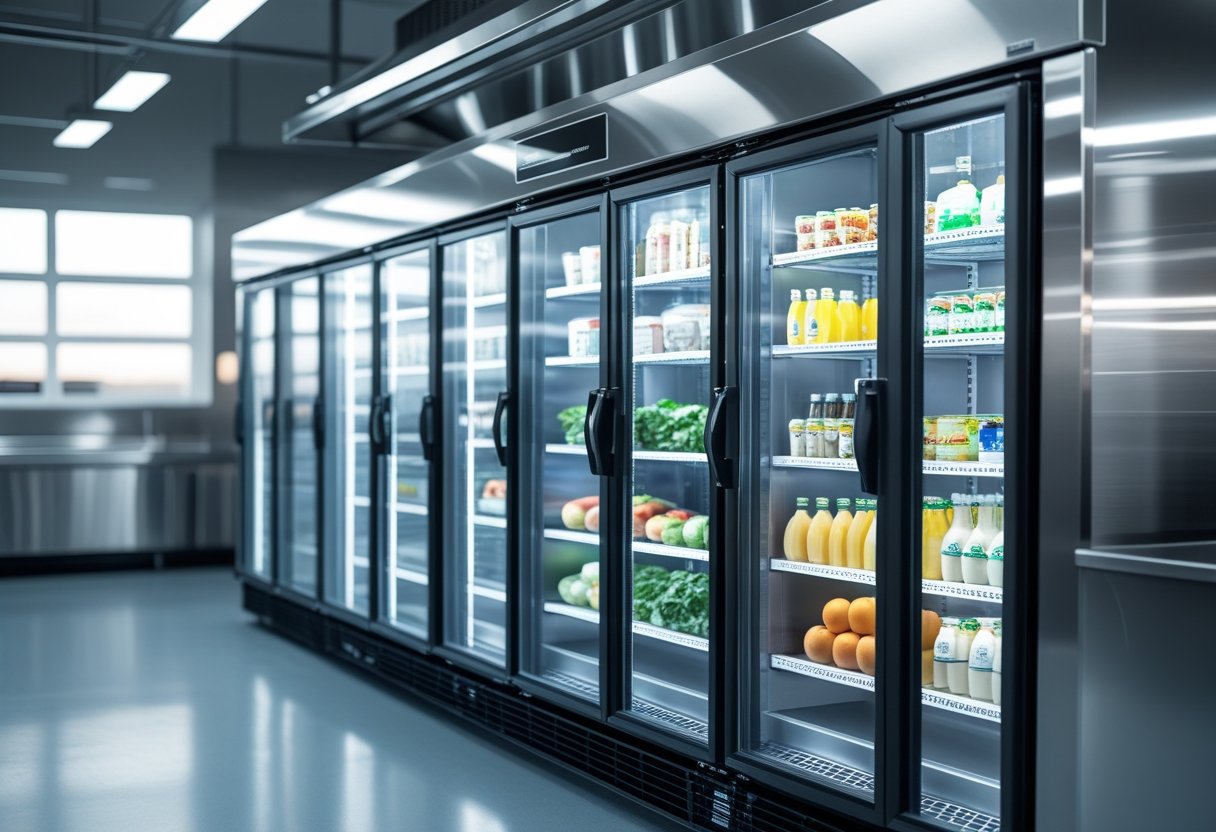
Memphis Commercial Refrigeration Experts Helping Your Business Stay Cool
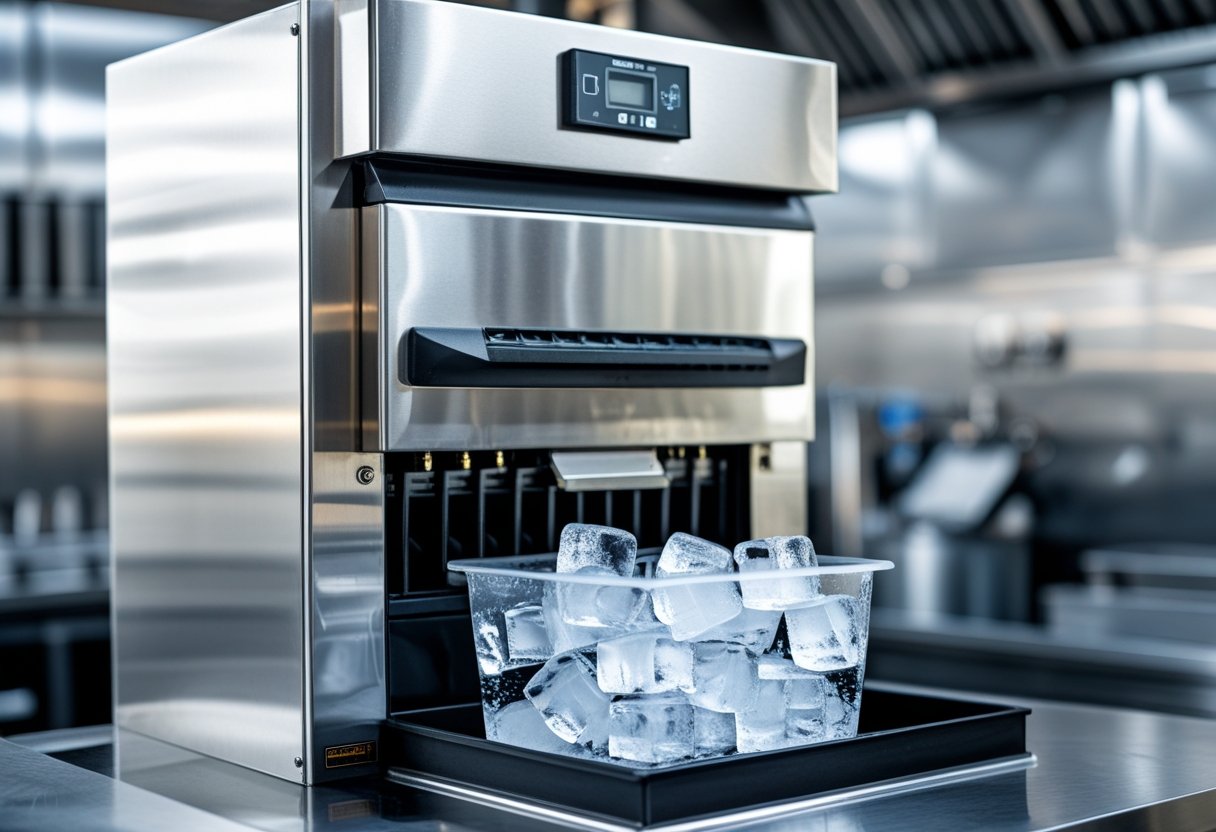
Why Is My Ice Machine Slow? Easy Fixes to Speed It Up
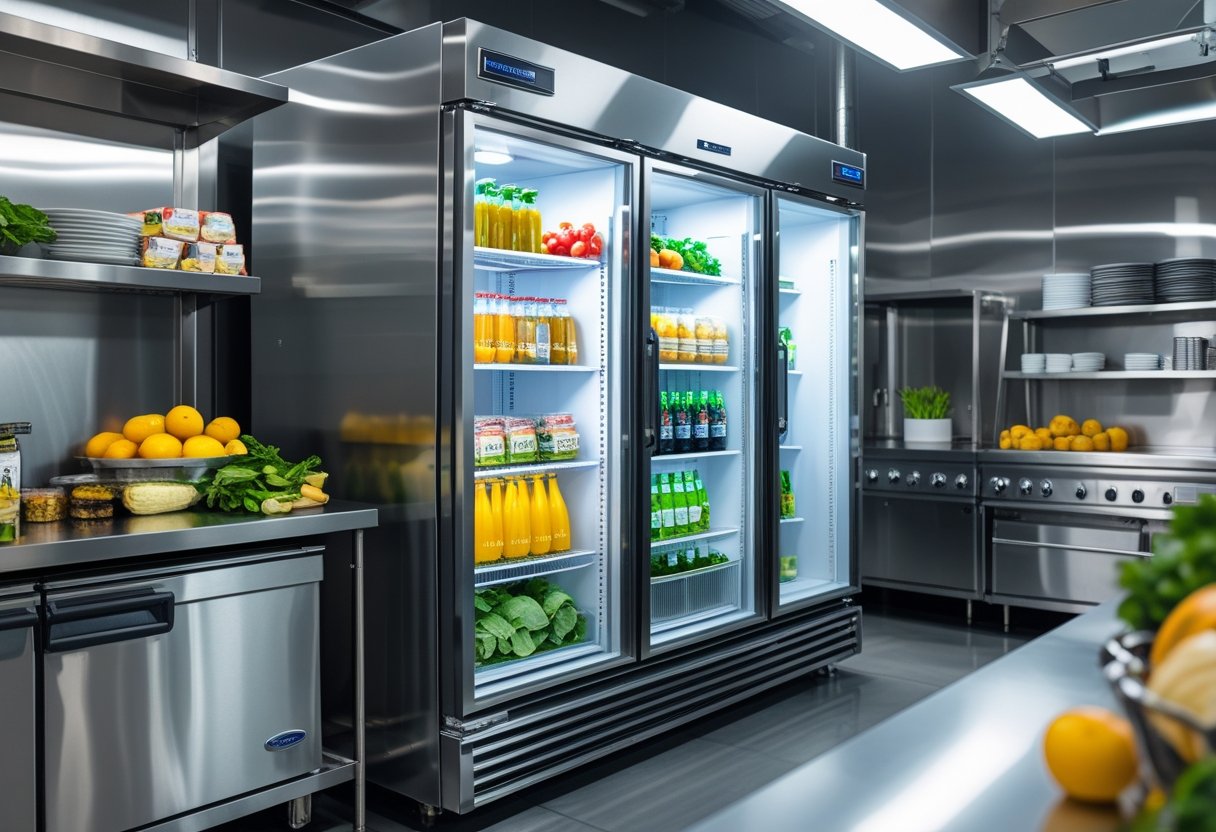
Summer Prep for Refrigeration Systems Tips to Keep Your Cooling Efficient and Trouble-Free
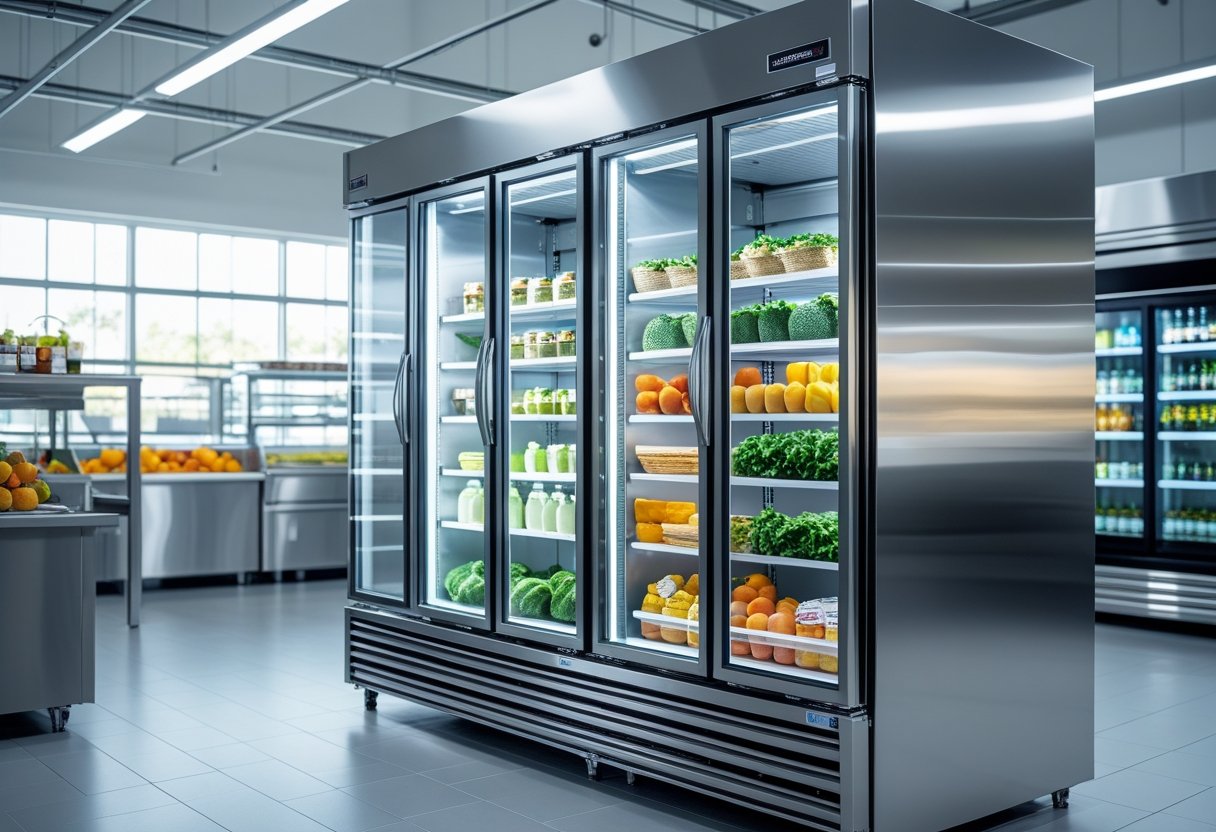
Memphis Commercial Refrigeration Experts Helping Your Business Stay Cool
